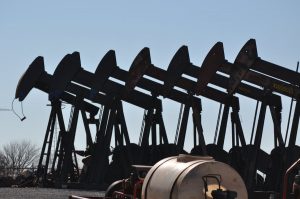EIA Petroleum Price Forecast: Decline in Prices for Crude Oil, Gasoline, and Diesel

The EIA at the U.S. Department of Energy believes the price of petroleum products will decline 5 percent to 10 percent this year from its previous predictions.
The Energy Information Administration (EIA) at the U.S. Department of Energy believes the price of petroleum products (crude oil, gasoline, and diesel) will decline 5 percent to 10 percent this year from its previous predictions. This EIA petroleum price forecast is influenced by factors such as global petroleum production, oil market trends, and global economic growth.
Revised Forecast for Crude Oil, Gasoline, and Diesel
EIA is forecasting crude oil will average $77 per barrel this year, which is $11 less than its previous prediction of $86. Gasoline also was revised down from $3.51 to $3.32, and diesel at $4.20 down 16 percent. Natural gas is expected to average $4.90 per million British thermal units, which is a 9.8-percent drop from its previous estimate of $5.43.
West Texas Intermediate crude oil closed at $77 on the New York Mercantile Exchange in February. AAA said the national average for retail gasoline was $3.272 per gallon at that time.
IA based its new projections this week in its latest short-term energy outlook on expectations of a 0.5% growth in GDP, and an increase in global petroleum supplies.

EIA said oil production in the U.S. will reach historic highs this year, averaging 12.4 million barrels per day.
Enjoying our insights?
Subscribe to our newsletter to keep up with the latest industry trends and developments.
Stay InformedImpact of Flat Economic Growth on Energy Consumption
“Relatively flat economic growth this year results in total U.S. energy consumption falling by 0.9 percent in our forecast,” EIA said in a press release.
The agency said it assumed global GDP growth — based on forecasts from Oxford Economics — will average 1.8 percent this year.
“We forecast that global liquid fuels consumption will increase 1 percent this year (1 million barrels daily),” EIA said. ”Petroleum consumption growth will be driven by rising petroleum demand in China and India this year and 2024.”
Global Petroleum Production and Consumption
“The United States and OPEC account for most of the increase in global production, offsetting production declines in Russia,” EIA said. “We forecast that Russia’s petroleum production will fall from 10.9 million barrels per day in 2022 to 9.5 million barrels per day this year as a result of sanctions related to Russia’s full-scale invasion of Ukraine. We forecast that U.S. production will grow by 5 percent (1 million barrels daily) this year, and OPEC liquid fuels production (which includes crude oil) will increase by 0.5 percent, or 160,000 barrels per day this year.”
The amount of oil produced and sold internationally by Russia remains uncertain. On Feb. 5, the European Union’s (EU) ban on seaborne imports of petroleum products from Russia became effective, which is expected to be more disruptive to global petroleum markets than the EU’s December 2022 ban on seaborne crude oil imports from Russia.
U.S. Oil Production Reaches Historic Highs

EIA reported a 19 million barrel increase in U.S. crude oil inventories in February to 439.4 million barrels, which is an increase of 26.3 million barrels from a year ago.
EIA said oil production in the U.S. will reach historic highs this year, averaging 12.4 million barrels per day, which would surpass the previous high of 12.3 million barrels in 2019. Oil production declined during the pandemic in 2020, but has steadily increased to 12 million barrels per day in 2022.
Texas is the leading oil-producing state, and the Permian Basin is the largest producing region. EIA expects an increase of 440,000 barrels per day in the Permian Basin this year.
Increasing Inventories Amid Declining Demand
The increase in production coupled with declining demand has created an increase in inventories. EIA reported a 19 million barrel increase in U.S. crude oil inventories in February to 439.4 million barrels, which is an increase of 26.3 million barrels from a year ago.
“Implied builds in global petroleum inventories — when there is more petroleum production than consumption — are driving these declines in crude oil prices,” EIA said. “We forecast global petroleum inventory builds will average more than 0.6 million barrels per day this year and in 2024.”
For more information on the energy market and oil production, visit Tank Transport’s Oil & Gas Industry News.





















